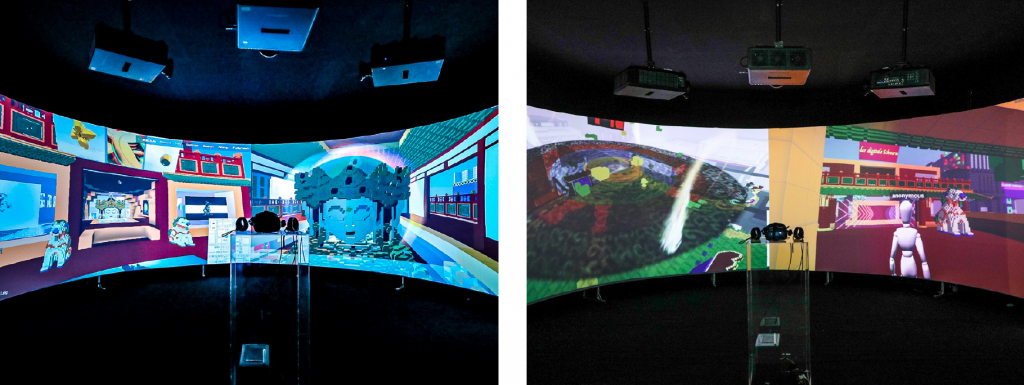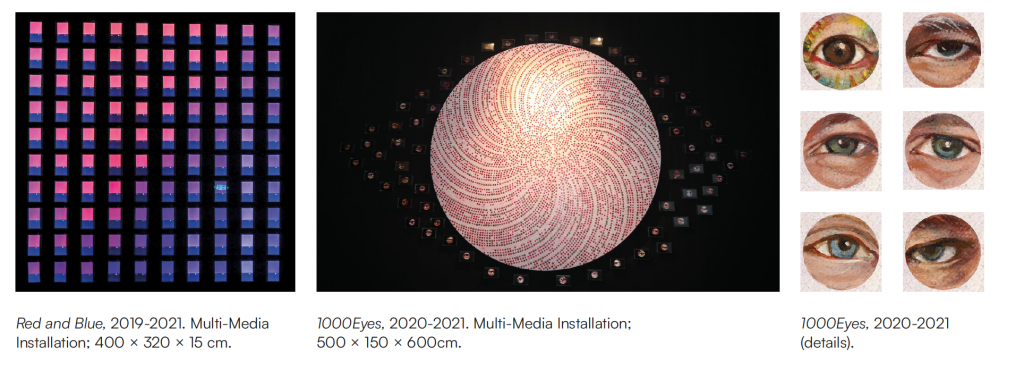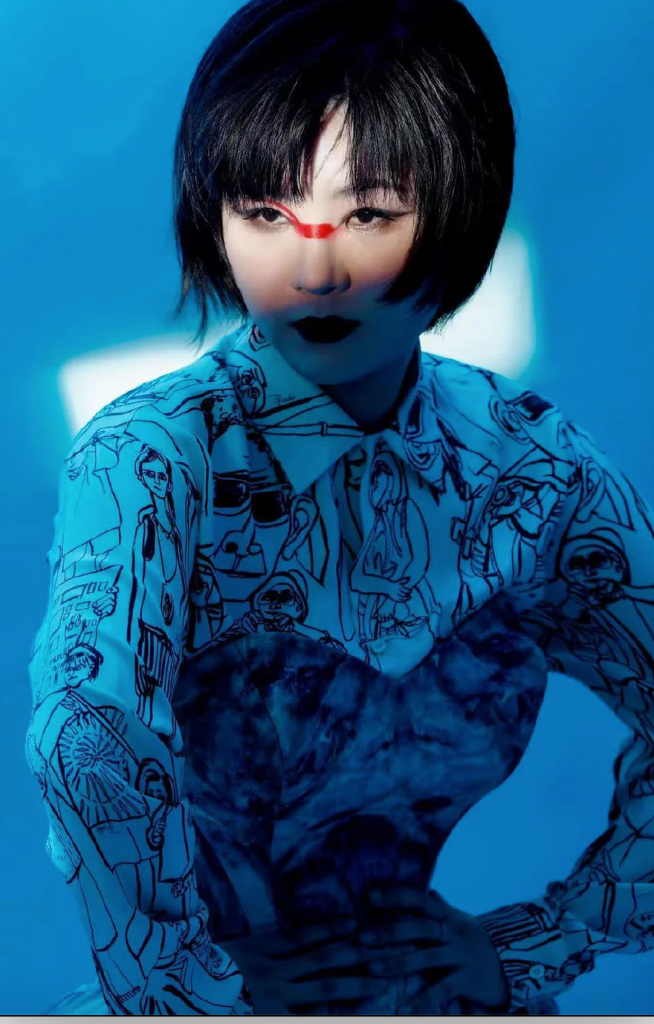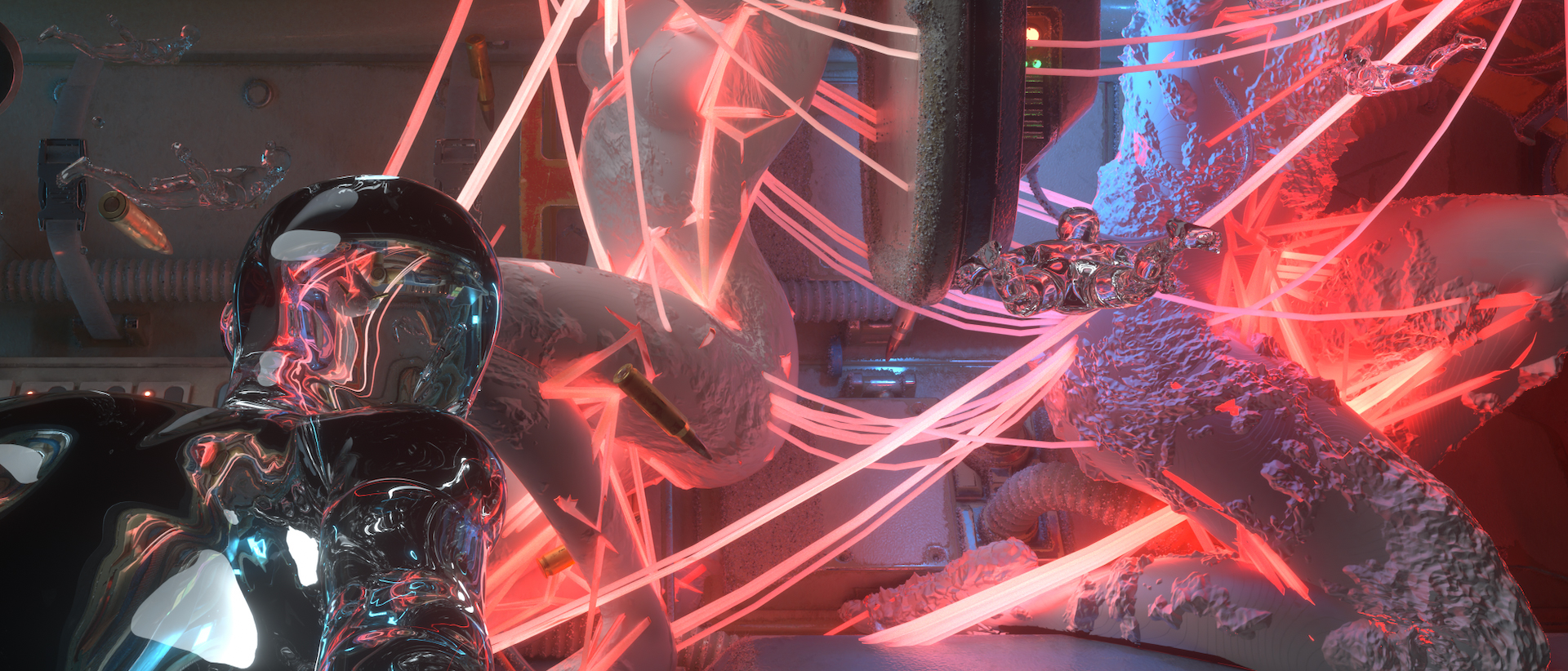21/04/2022—23/11/2022
Preview: 21–22/04/2022
Pavilion Lamierini 2Armory District, Venice, Italy
“COOKIE COOKIE,” the exhibition CryptoZR (Liu Jiaying) and I presented in 2021, has been updated to “COOKIE COOKIE 2.0” for Venice. Unfortunately, the artist cannot be present due to the pandemic. Even though Europe is absorbed with war and nuclear deterrents and the pandemic is still ongoing, we will open the show in Venice on April 20, 2022.
“…the representation of bodies and their metamorphoses; the relationship between individuals and technologies; the connection between bodies and the Earth.” – Cecilia Alemani
Do we want to consider the communities in which we exist—whether physical, physiological, or natural—and the contracts of culture, race, family, and finance that bind those communities? Humanity has always created more ties that bind, based on a given region, religion, or family relationship. These bonds shape how we distinguish people from one another and the methods we use to quickly build trust or to establish consensus and convention. The larger context of identification that results, encompassing nationalism, the homogenization of taste, and the comparative (if anonymous) understanding of ideology and information, can build a framework in which another person and I are part of the same community.
The Venice Biennale is a similar framework, or it could also be seen as a type of underlying protocol. Does the curator’s theme “The Milk of Dreams” have a certain breadth and identifiability? If we discuss the fact that 90% of the artists are women, does that inspire more empathy after the Me Too movement? Was completely transplanting the title from the best-selling children’s book by Leonora Carrington (1917-2011) subjective, rooted in Big Data, or entirely random? The curator has offered three directions, including “the representation of bodies and their metamorphoses; the relationship between individuals and technologies; the connection between bodies and the Earth.” How do they create organic connections between underlying protocols and contemporary ideologies?
This thing called the “metaverse” is another concentration of people that intends to foster community and escape a reality that already has so many underlying structures and conditions.

Is it technology, community, or something else? If we accept all change as a precondition for the working of the world since Karl Marx discussed the alienation of people from the economy, then what is still so strange or unintelligible?
We accept everything about the present, which also includes climate change, other people, breakfasts and refrigerators, unfamiliar objects, and the machinations of fate, but there will always be people who ask: Why do humans exist? Following the current path, people are cogs in socialism, or frantic workers in Charlie Chaplin’s Modern Times. In order to explore autonomy, consciousness, and introspection, as well as rational explanations for confl icts between people, humans invented religion, theology, philosophy, psychology, sociology, law, and numerous related professions, all of which have continued to evolve. New confl icts have produced larger intellectual interactions. Like in American Gods, when the New Gods replaced the Old Gods, belief, technology, and choice informed a new framework. All of this shapes the several contradictions in and aspects of CryptoZR’s art. In Red and Blue, the artist discusses how a work of art is made amidst the shift from images to community participation in politics and the connections made between anonymous users through blockchain and web technologies; it is a more direct and real exploration of communities and transactions. Motivations, gains, games, and ideologies make up an interesting whole.

If we situate Red and Blue in the context of the current confl ict between Russia and Ukraine, people have been controlled by the news, social media and bank accounts have been suspended, and people have even been cut off from the internet. In the face of war or nuclear crisis, extremes are emerging within globalization’s ideology of sameness and wholeness, and we must guard against them. We must keep in mind the dissolution of the Soviet Union, the Cold War mentality, the fact that Ukraine and Russia were once part of the Soviet Union, and the games played by regional leaders and NATO aft er the Soviet Union’s collapse. In the logic of technology, this is related to the use of Starlink, the rise of blockchain, de-centralized fi nance, and smart contracts, and everything from bitcoin to NFTs to the new frenzy around the metaverse. Red and Blue, like any game involving multiple frameworks, could be seen as an ideology or a transaction. It could be about technology and people, but it could also be about pure color and action.
CryptoZR continues to explore diff erent mediums and frameworks. Small Goal, Greed Is Good, Top Bidder, and other smart contract applications can be seen as web-based performances, but interaction with the work does not require traditional art system intermediaries, such as museums, art institutions, and other physical spaces. The works are made online, but they are then transplanted into multiple forms in offl ine space, including concept, action, and design. CryptoZR’s work challenges both the new frameworks for online community, technology, and psychology and the new possibilities for physical spaces and artistic ideas.
CryptoZR’s CHIJIN was constructed in Cryptovoxels, and everything in the virtual community is built on a crypto wallet. The interactions between the space, architecture, and avatar create something that connects the real and virtual worlds. A complete virtual reality infrastructure and a crypto wallet off er an entrance to the metaverse. However, humans cannot yet move at will between the real and the virtual like in The Matrix or Ghost in the Shell. CryptoZR’s work is about ways of transforming science fi ction and imagination into the present reality and constantly adjusting the applicable scope for humans and technologies.
Since its emergence, the internet has continued to produce new subject matter, including discussions and explorations of gender, culture, region, and community. Anonymization, AI, surveillance, VPNs, and other realities that have arisen from technology, as well as the dark web and Wikileaks, comprise an alternate storyline to the Black Lives Matter, Me Too, and Stop Asian Hate movements in the offl ine world. Returning to the offl ine world, CryptoZR is a woman artist who has participated in the diversifi cation and alienation of identities that have come with emerging technologies. With a name like “CryptoZR,” she could also be a “he” or an “it.”

CryptoZR’s work is based on community, focused on connections between people. When extended to individuals and technologies, or to bodily metamorphoses, perhaps we should accept all of this and re-evaluate how people should get along in a modern society? What exists between people? How should people learn and play in those interactions? Perhaps in CryptoZR’s artistic explorations, we can glimpse narratives of multiple parallel worlds, or another kind of intelligence.
— Li Zhenhua
Artist: CryptoZR
CryptoZR (Liu Jiaying), previously served as Chief Product Designer of Global SNS in the international business department at Tencent headquarter. In 2016, she was accepted to the Central Academy of Fine Arts for a master’s degree. During her postgraduate period, the artist began using fundamental blockchain technology to explore a unique artistic language.
In 2017, CryptoZR founded a blockchain company, ProChain Foundation, in Singapore, with products including: Prabox (first in EOS ecological traffic), TopBidder (top 10 in EOS ecological traffic), and DeFi product YFII, which currently ranks 68 in the global crypto market value. YFII was also listed on three major crypto exchanges: OKEX, Huobi and Binance. Due to her active involvement in the blockchain foundation, CryptoZR took a break from school for one year in 2019 before obtaining her master’s degree from the Central Academy of Fine Arts the following year.
Curator: Li Zhenhua
Li Zhenhua (b. 1975, Beijing) currently works between Zurich, Berlin and Hong Kong. Active in the contemporary art field since 1996, his practice primarily involves curation, art creation and project management. Li is the Film curator at Art Basel Hong Kong (since 2014) and has been the nominator for the Sommerakademie im Zentrum Paul Klee and the Prix Pictet in Switzerland. He once served as a member of the international advisory board for the exhibition Digital Revolution at the Barbican Centre in the United Kingdom (2014), recently being the jury for Korean Culture Center’s Open Call 2021, DAAD’s film residency 2022. Li have participated in the BEUYS 2021’s Voices 2021. Li Zhenhua has edited several artists’ publications, including “Yan Lei: What I Like to Do” (Documenta13, 2012), “Feng Mengbo: Journey to the West”, “Hu Jieming: One Hundred Years in One Minute” and“Yang Fudong: Dawn Mist, Separation Faith” (2009), among others. A collection of his art reviews has been published under the title “Text” in 2013. He won “Curator of the Year” from Art Power 100 (2014), “Curator of the Year” from TANC Asia Prize (2015), “The Regional Contemporary Art Project, INNOVATION Prize, Russia” from the 3rd Ural Industrial Biennale of Contemporary Art (2016).
Article Source:https://www.t-magazine.it/post/cryptozr-cookiecookie2-0curatedbylizhenhua-the1stannualmetaverse-venice

